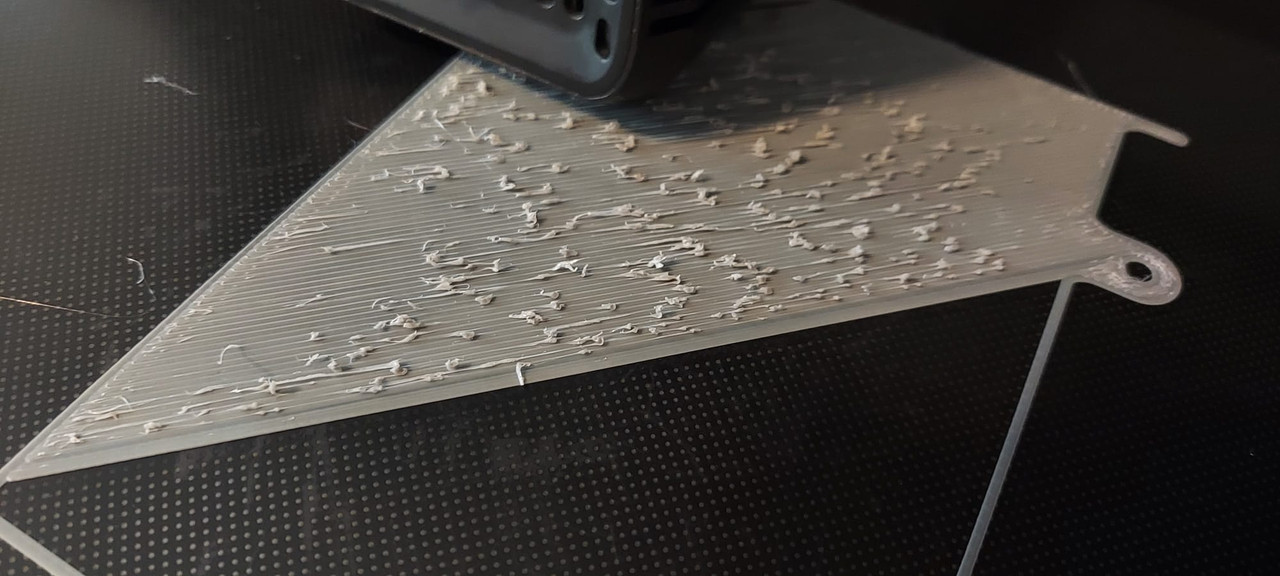3d printing questions
- robertspark
- Offline
- Platinum Member
-

Less
More
- Posts: 915
- Thank you received: 216
10 Jan 2022 15:11 #231310
by robertspark
3d printing questions was created by robertspark
you guys running linuxcnc for your 3d printing, how do you sense the bed and extruder temperature?
How do you control your bed and extruder temperature?
(I presume you just a digital output for each)?
What about fan control?
And finally Extruders.... E0,E1 etc... how are you controlling them via gcode? (are you reassigning / remapping them to an unused axis letter?)
How do you control your bed and extruder temperature?
(I presume you just a digital output for each)?
What about fan control?
And finally Extruders.... E0,E1 etc... how are you controlling them via gcode? (are you reassigning / remapping them to an unused axis letter?)
Please Log in or Create an account to join the conversation.
- tommylight
-

- Away
- Moderator
-

Less
More
- Posts: 21079
- Thank you received: 7196
10 Jan 2022 22:49 #231355
by tommylight
Replied by tommylight on topic 3d printing questions
Heaters are easy as they just need PWM, thermistors do require analog inputs with ADC, sooo....
Most here are using Remora with 3D printer boards/RPI so they come with analog inputs.
One way of doing ADC is to use an arduino nano or whatever and have them read the thermistors and report that as frequency to LinuxCNC via encoder counters, requires only two inputs on parallel port or Mesa boards.
For the more adventurous, there are always on every PC and RPI two analog inputs left unused, namely the Audio inputs. They are usually only 1Vpp, but quite high resolution and sampling rate.
No clue on how to read that in LinuxCNC, yet, no time to play.
Most here are using Remora with 3D printer boards/RPI so they come with analog inputs.
One way of doing ADC is to use an arduino nano or whatever and have them read the thermistors and report that as frequency to LinuxCNC via encoder counters, requires only two inputs on parallel port or Mesa boards.
For the more adventurous, there are always on every PC and RPI two analog inputs left unused, namely the Audio inputs. They are usually only 1Vpp, but quite high resolution and sampling rate.
No clue on how to read that in LinuxCNC, yet, no time to play.
The following user(s) said Thank You: robertspark
Please Log in or Create an account to join the conversation.
- scotta
-

- Offline
- Platinum Member
-

Less
More
- Posts: 956
- Thank you received: 486
12 Jan 2022 20:31 #231607
by scotta
Replied by scotta on topic 3d printing questions
Sli3er / Prusa Slicer has a LinuxCNC gcode output version that assigns the extruder to the A axis.
The following user(s) said Thank You: robertspark
Please Log in or Create an account to join the conversation.
- frede7
- Offline
- New Member
-

Less
More
- Posts: 5
- Thank you received: 1
18 May 2022 03:36 #243244
by frede7
Replied by frede7 on topic 3d printing questions
Thanks, everyone for this helping content.
I'm trying to print with PETG filament. I printed with PLA before without issues. But with PETG I have some kinda blobby printing even on the first layer. I can't properly describe it so adding a photo.
Does this photo rings the bell to anybody? Is the nozzle/bed temperature too high or low? or its the moisture issue? or something else? or just a bad filament brand?
This is Voxelab Aquila 3D printer and 1.75mm PETG filament.
filament manufacture suggested nozzle temperature is 200-220°C, im printing at 215
suggested bed temp 60-80°C im printing at 80
my room temperature is 70F and humidity is 53%.
I opened the filament pack yesterday. so it shouldn't be too moist.
I'm trying to print with PETG filament. I printed with PLA before without issues. But with PETG I have some kinda blobby printing even on the first layer. I can't properly describe it so adding a photo.
Does this photo rings the bell to anybody? Is the nozzle/bed temperature too high or low? or its the moisture issue? or something else? or just a bad filament brand?
This is Voxelab Aquila 3D printer and 1.75mm PETG filament.
filament manufacture suggested nozzle temperature is 200-220°C, im printing at 215
suggested bed temp 60-80°C im printing at 80
my room temperature is 70F and humidity is 53%.
I opened the filament pack yesterday. so it shouldn't be too moist.
Please Log in or Create an account to join the conversation.
- tommylight
-

- Away
- Moderator
-

Less
More
- Posts: 21079
- Thank you received: 7196
18 May 2022 12:00 - 18 May 2022 12:02 #243262
by tommylight
Replied by tommylight on topic 3d printing questions
Way to cold, PETG must be printed at 240C to 260C for normal speeds, i print at 265 as standard due to high speed.
Bed at 70C to 80C, but if you have a glass Carborandum bed, then 65 to 70C.
-
If there is any moisture in the PETG filament, you will hear it as it crackles during printing, so heat the bed to 60C, put the filament on it and cover it with something.
-
EDIT,
If you do not have a high temp hot end, do not go over 245-250C.
Bed at 70C to 80C, but if you have a glass Carborandum bed, then 65 to 70C.
-
If there is any moisture in the PETG filament, you will hear it as it crackles during printing, so heat the bed to 60C, put the filament on it and cover it with something.
-
EDIT,
If you do not have a high temp hot end, do not go over 245-250C.
Last edit: 18 May 2022 12:02 by tommylight.
Please Log in or Create an account to join the conversation.
- andypugh
-

- Offline
- Moderator
-

Less
More
- Posts: 19752
- Thank you received: 4584
18 May 2022 12:44 #243267
by andypugh
Replied by andypugh on topic 3d printing questions
It looks like filament is building up on the nozzle then falling off occasionally.
I think that @tommylight probably has the right answer.
I think that @tommylight probably has the right answer.
The following user(s) said Thank You: tommylight
Please Log in or Create an account to join the conversation.
Time to create page: 0.056 seconds

